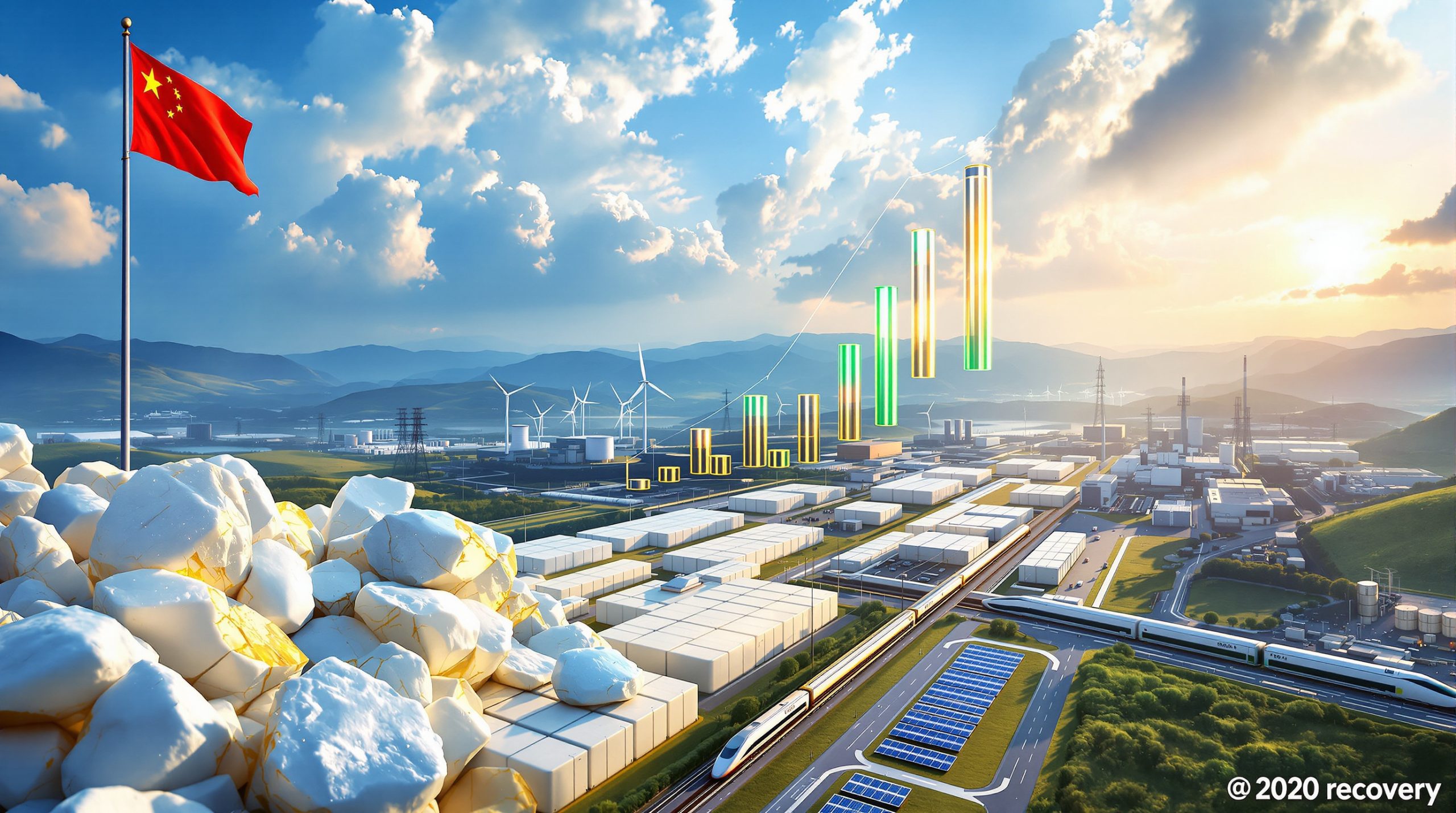The Impact of a Weakening US Dollar on Metals and Commodity Markets
The recent decline in the US dollar has triggered a wave of price movements across global metal markets, showcasing the classical inverse relationship between currency strength and commodity values. As the greenback retreats, most metals are surging forward, creating ripple effects throughout industrial supply chains and investment portfolios.
Base Metals Rally as Dollar Weakens
The Shanghai Futures Exchange (SHFE) has seen impressive gains across most base metals, with zinc surging 1.38%, nickel climbing 1.41%, and tin rising 1.2% in recent trading sessions. This pattern is mirrored in London Metal Exchange (LME) markets, where nickel has advanced 1.17%, tin 0.95%, and zinc 0.89%.
"When the dollar weakens, commodities become more affordable for buyers holding other currencies, effectively increasing global purchasing power for dollar-denominated assets," explains Zhang Wei, Chief Commodity Analyst at Shanghai Metals Market.
Copper stands as a notable exception to this trend, with SHFE copper contracts declining 0.39% despite the broadly supportive currency environment. This divergence likely reflects China-specific demand concerns, particularly in the property sector where development activity remains subdued despite recent stimulus measures.
Precious Metals and Specialized Materials
Gold and silver have posted moderate gains amid the dollar's retreat, with SHFE gold rising 0.49% and silver adding 0.22%. These modest increases align with precious metals' traditional role as inflation hedges and safe-haven assets during periods of currency volatility. The gold price analysis suggests this trend may continue as economic uncertainties persist.
Industrial materials tell a more dramatic story, with alumina contracts surging 2.75% and foundry aluminum rising 0.53%. However, the real standouts are in technology-critical materials, where polysilicon contracts have skyrocketed 5.5% and silicon metal has jumped 3.74%.
The Polysilicon Surge: Solar Industry's Supply Squeeze
The remarkable 5.5% leap in polysilicon prices represents one of the strongest performances across all commodity categories, driven by fundamental supply-demand imbalances in the solar energy value chain.
Renewable Energy Demand Outpacing Supply
Global solar installation targets have accelerated dramatically, with China targeting 1,200 GW of solar capacity by 2030, the EU pushing for 45% renewable energy under REPowerEU, and the US extending tax credits through the Inflation Reduction Act. This coordinated policy push has created unprecedented demand for solar-grade polysilicon.
"We're seeing a perfect storm in the polysilicon market," notes Dr. Liu Chen, Director of Renewable Materials Research at the China Nonferrous Metals Industry Association. "Installation targets are being revised upward while production capacity remains constrained by lengthy facility construction timelines and energy-intensive processing requirements."
Manufacturing Innovations Driving Quality Requirements
The solar industry's shift toward higher-efficiency cell technologies—particularly TOPCon (Tunnel Oxide Passivated Contact) and HJT (Heterojunction) cells—has significantly increased demand for higher-purity polysilicon grades. These advanced cell architectures require semiconductor-grade silicon with impurity levels below 0.1 parts per billion, compared to 1-2 ppb acceptable in conventional cells.
This quality upgrade has created a two-tier market where premium polysilicon commands substantial price premiums, contributing to the overall price surge as manufacturers compete for limited high-grade supply.
Market Implications for Solar Supply Chain
The polysilicon rally creates significant challenges for solar module manufacturers caught between rising input costs and competitive pressure to maintain affordable panel prices. Without the ability to fully pass costs forward, many mid-tier manufacturers face margin compression, potentially triggering industry consolidation.
Investment Alert: The polysilicon supply squeeze is expected to persist through at least mid-2026, when major capacity expansions from leading producers like Tongwei, GCL, and Daqo are scheduled to come online. Until then, pricing power remains firmly with upstream suppliers.
Ferrous Metals Sector Shows Remarkable Strength
The ferrous metals category has demonstrated exceptional performance, with nearly all components posting gains exceeding 1%, signaling robust industrial demand despite broader economic uncertainties.
Iron Ore Leads the Charge
Iron ore has emerged as the standout performer in the ferrous complex, surging 3.67% as China's steel mills continue to maintain high production rates despite mixed downstream demand signals. This strength reflects both restocking activity and expectations for increased infrastructure spending in the second half of 2025. Recent iron ore trends suggest that China's demand will continue to be a crucial factor in the market.
Recent exploration data supports this bullish outlook, with China reporting the discovery of 38 new mineral sites in H1 2025—a 31% year-over-year increase. Non-oil and gas mineral exploration investment has reached 6.693 billion yuan, up 23.9% from the previous year.
Steel Products Signal Diverse Demand
Downstream steel products are showing consistent strength, with hot-rolled coil (HRC) rising 2.16% and rebar climbing 1.89%. The relatively balanced performance between these two products—which serve different market segments—suggests broad-based demand rather than sector-specific strength.
"The narrowing spread between rebar and HRC prices indicates synchronized demand from both construction and manufacturing sectors," explains Li Qiang, Steel Industry Analyst at Mysteel. "This balanced growth pattern is typically more sustainable than when we see divergence between the two products."
Coking Materials Outperforming
The most dramatic gains in the ferrous complex are seen in steelmaking inputs, with coking coal surging 4.24% and coke rising 3.56%. These movements reflect both supply constraints—particularly for premium hard coking coal grades—and strong operational rates at integrated steel mills.
The continued strength in metallurgical coal occurs despite China's energy transition plans, highlighting the critical medium-term role of traditional steelmaking processes even as the country develops its green steel roadmap.
Shipping Market Signals Global Trade Resilience
European container shipping contracts have posted a healthy 1.62% gain to close at 2,022.5 points, reflecting resilient global trade flows despite geopolitical tensions and trade policy shifts.
Rate Recovery Signals Demand Strength
The upward movement in container rates suggests continued strength in shipping demand, particularly on Asia-Europe routes where capacity has been constrained by Red Sea diversions. This rate resilience contradicts earlier fears that US economy tariffs would significantly depress global trade volumes.
"Shipping rates are a real-time barometer of global trade health," notes Captain Wang Feng, Maritime Logistics Consultant. "The current strength indicates that trade flows are adapting to policy changes rather than contracting dramatically."
Trade Flow Implications
The robust container rates align with China's impressive export performance, particularly in the automotive sector. Auto exports totaled 3.083 million units in H1 2025, up 10.4% year-over-year, including 1.06 million new energy vehicles (NEVs)—a remarkable 75.2% increase from the previous year.
These high-value exports require significant container capacity, contributing to rate strength on major trade lanes despite economic headwinds in destination markets.
Supply Chain Cost Pressures
Rising shipping rates represent a potential inflationary pressure in global supply chains, particularly for consumer goods and manufacturing inputs. The 1.62% rate increase, while modest compared to the extreme volatility seen during the pandemic, nonetheless adds to the cost structure for importers already managing tariff impacts.
Logistics managers are increasingly exploring modal shifts—including expanded rail freight via the China-Europe Land Bridge—to mitigate these costs, though capacity constraints limit the immediate impact of such strategies.
The Dollar's Decline: Monetary Policy Divergence
The US dollar index has fallen 0.12% to 97.38, continuing a multi-week downtrend that has significant implications for global commodity markets and trade flows.
Fed's Cautious Approach to Rate Cuts
Recent Federal Open Market Committee (FOMC) minutes reveal divided opinions on the timing of potential interest rate cuts, with several officials supporting a July reduction while most favor later action. This internal debate reflects uncertainty about inflation trajectories, particularly given the potential impact of recently announced tariff policies.
"The committee remains data-dependent but increasingly concerned about growth risks," states FOMC voter and St. Louis Fed President Musalem in recent remarks on monetary policy. "Labor market softening must be balanced against potential tariff-induced price pressures."
Tariff Policy Complications
The Biden administration's announcement of 50% tariffs on imported copper starting August 1, 2025, along with additional tariffs ranging from 20% to 50% on goods from multiple countries, has complicated the inflation outlook. The ongoing US-China trade war continues to create uncertainty in global markets and influence commodity prices. These trade measures may introduce price pressures that delay the Fed's pivot to monetary easing.
Market expectations for rate cuts have been pushed back accordingly, with the CME FedWatch Tool now showing a 65% probability of the first cut occurring in September rather than July.
Global Economic Positioning
The dollar's weakness also reflects shifting growth differentials between major economies, with China's targeted stimulus measures and Europe's gradual recovery improving their relative positions. This rebalancing supports commodity-exporting economies and emerging markets that have historically struggled during periods of dollar strength.
China's Economic Indicators Drive Commodity Outlook
Recent Chinese economic data releases provide crucial context for commodity market movements, particularly in the automotive and natural resources sectors that drive metal demand.
NEV Revolution Accelerates
China's automotive sector continues its remarkable transformation, with new energy vehicle (NEV) production reaching 6.968 million units in H1 2025—a 41.4% year-over-year increase. Sales have kept pace, rising 40.3% to 6.937 million units.
Most significantly, NEVs now account for 44.3% of total new vehicle sales in China, demonstrating the rapid pace of electrification in the world's largest automotive market. This transition has profound implications for metal demand patterns, boosting requirements for battery metals (lithium, nickel, cobalt) and electrical components (copper) while potentially reducing demand for catalytic converter metals (platinum, palladium).
Resource Security Takes Priority
China's focus on resource security has intensified, with exploration success and investment growth highlighting the strategic importance of domestic supply chains. The discovery of 38 new mineral sites in H1 2025 represents a 31% year-over-year increase, supported by exploration investment reaching 6.693 billion yuan (+23.9% YoY).
Particularly noteworthy is the increased participation of private capital, with social capital investment in mineral exploration reaching 3.359 billion yuan—a 28.2% year-over-year increase. This diversification of funding sources supports more robust exploration activity across a broader range of critical minerals.
Regional Transformation Strategies
Shanxi Province's recently announced energy transformation strategy provides a template for resource-rich regions navigating the energy transition. The province is accelerating construction of a new energy system while maintaining its role as a nationally important energy and raw materials base.
This balanced approach—promoting emerging industries while gradually transforming traditional sectors—offers a model for managing the economic and social challenges of industrial transition in resource-dependent regions.
Energy Markets Navigate Complex Currents
Crude oil prices have posted modest gains amid conflicting signals, with WTI rising 0.1% and Brent advancing 0.16% in recent trading.
Demand Resilience Despite Headwinds
US gasoline demand has surged 6% week-over-week to 9.2 million barrels per day, signaling strong summer driving season activity despite elevated retail prices. This demand strength has partially offset bearish inventory data, with US crude stocks rising while gasoline and distillate inventories declined.
"The market continues to weigh potential impacts of US tariffs on global growth against robust current demand," explains Zhang Min, Energy Analyst at China National Petroleum Corporation. "This tension creates the range-bound trading pattern we've observed in recent weeks."
Trade Policy Ripple Effects
The announced US tariffs on various goods, including the 50% levy on imported copper, have raised concerns about broader economic impacts that could eventually affect energy demand. However, the immediate effect has been muted, with oil prices showing limited reaction to the trade policy shifts.
This resilience suggests the market views these measures as targeted rather than systemic threats to global growth, though sentiment could shift if retaliatory measures escalate trade tensions further.
Energy Transition Complexity
Shanxi Province's comprehensive energy strategy highlights the complex reality of the global energy transition, where fossil fuel production remains critical even as renewable capacity expands rapidly. The province's dual focus on traditional energy security and new energy system development reflects China's pragmatic approach to managing this transition.
This balanced strategy—maintaining conventional energy reliability while accelerating clean alternatives—mirrors the approach taken by many global energy companies as they navigate the multi-decade transition process.
Market Indicators and Future Catalysts
Several critical economic indicators and events are scheduled for release in the coming days, providing potential market-moving information for commodity traders and investors.
Chinese Financial Metrics
Upcoming releases include June M2 money supply growth rate, January-June social financing scale, and new yuan-denominated loans. These metrics will provide insight into China's monetary conditions and credit expansion, with direct implications for industrial activity and commodity demand.
Previous data showed May M2 growth at 6.9% year-over-year, with analysts expecting a slight acceleration in June as stimulus measures gain traction.
US Treasury Market Dynamics
The 10-year Treasury auction results—including total amount, bid-win rate, and high yield—will offer insights into debt market sentiment and inflation expectations. With the yield curve currently inverted, any steepening could signal changing expectations about the Fed's policy trajectory.
Employment and Inflation Data
US initial jobless claims for the week ending July 5 and Germany's final June CPI annual rate will provide updated views on two critical economic variables: labor market health and inflation persistence. Both metrics factor heavily into central bank decision-making and thus currency movements that affect commodity prices.
FAQ: Understanding Metals and Commodity Markets
How does the US dollar affect metal prices?
The US dollar typically has an inverse relationship with commodity prices, including metals. When the dollar weakens, as seen in the current market with a 0.12% decline to 97.38, commodities priced in dollars become less expensive for buyers using other currencies, potentially increasing demand and pushing prices higher. This relationship explains why most metals are rising as the dollar falls.
Additionally, dollar weakness often correlates with more accommodative US monetary policy, which can boost economic activity and industrial demand for metals. Institutional investors may also shift portfolio allocations toward commodities during periods of dollar depreciation as an inflation hedge, according to analysis from CME Group.
Why is polysilicon outperforming other commodities?
Polysilicon's remarkable 5.5% price surge stems from several factors: accelerating global solar installation targets creating strong demand, limited production capacity causing supply constraints, technological advancements requiring higher-grade materials, and supportive government policies for clean energy.
The polysilicon market is particularly sensitive to supply-demand imbalances due to the capital-intensive nature of production facilities and lengthy construction timelines. New capacity typically requires 18-24 months from investment decision to production, creating extended periods where supply struggles to catch up with rapidly expanding demand.
What do rising ferrous metal prices indicate about the economy?
The broad-based gains in ferrous metals (iron ore +3.67%, rebar +1.89%, HRC +2.16%) suggest robust industrial activity and construction demand. Strong performance across the entire steel value chain, including raw materials like coking coal (+4.24%) and coke (+3.56%), indicates healthy manufacturing and construction sectors, potentially signaling positive economic momentum.
In the Chinese context, ferrous metal strength often correlates with infrastructure investment, which governments typically increase during periods of economic uncertainty to support growth targets. The current price action suggests market expectations for continued or expanded infrastructure stimulus in the second half of 2025.
How might tariff policies impact commodity markets?
The announced US tariffs, including 50% on imported copper and varying rates (20-50%) on goods from multiple countries, could significantly disrupt global supply chains and trade flows. These measures may lead to price increases in affected commodities, shifts in production locations, changes in investment patterns, and potential retaliatory measures from trading partners.
For copper specifically, the 50% tariff effective August 1 will likely redirect trade flows, with more material flowing to non-US destinations while US consumers face higher prices or seek alternative suppliers exempt from the tariffs. This trade diversion could create regional price differentials and alter traditional arbitrage relationships between global exchanges.
What's driving China's strong NEV growth?
China's new energy vehicle sector continues to show remarkable strength, with production up 41.4% and sales up 40.3% year-over-year in H1 2025. This growth is supported by favorable government policies, improving technology and vehicle options, expanding charging infrastructure, consumer acceptance, and export opportunities.
The NEV market's 44.3% penetration rate represents a critical tipping point where electric vehicles are moving beyond early adopters to mainstream consumers. This transition is further accelerated by cost parity achievements between comparable NEV and internal combustion models in several vehicle segments, removing a historical adoption barrier
Want to Spot the Next Major Mineral Discovery?
Discover how to identify significant ASX mineral discoveries before the broader market with Discovery Alert's proprietary Discovery IQ model, providing real-time alerts and actionable insights for investors. Explore historic returns of major discoveries and what makes them exceptional by visiting Discovery Alert's discoveries page and gain your market-leading advantage today.




